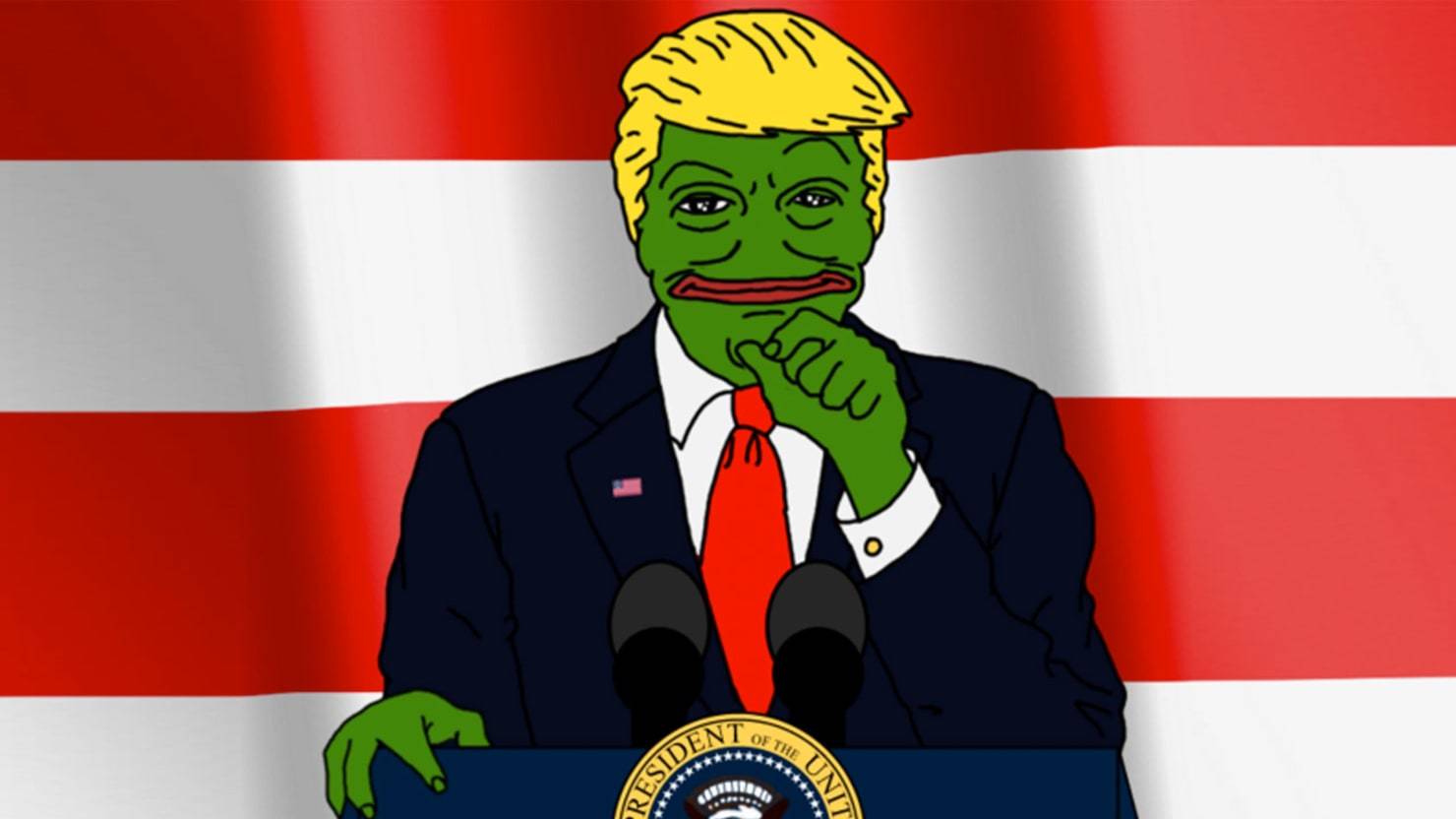At Real Life, Willie Osterweil has an insightful and important piece entitled “Mass Appeal,” which examines the similarities and differences between the aesthetic strategies of the contemporary “alt-right” and those of their twentieth-century fascist forbearers. Whereas Nazis deployed an aesthetics of power and sublimity, writes Osterweil, today’s neofascists rely on the circulation of coded “poor images” whose ultimate aim is to turn the fascist worldview into “a kind of common sense.” Read an excerpt from the piece below, or the full text here.
Today’s fascist style must concern itself not with aestheticizing the political as such — that’s already been accomplished after all — but instead must work to produce conditions of sufficient confusion, apathy, irony, or symbolic distance about what they are trying to do, so that they can fall within liberal democracies’ commitment to tolerance. This also allows them to not repel potential converts with trappings (swastikas, SS memorabilia) that might cost them social approval.
The social unacceptability of Nazism makes straightforwardly embracing its symbols and aesthetics an efficient way of expressing social alienation or the rejection of liberal society (à la Charles Manson, or 1977 punks), but it makes them useless for expanding the ranks of fascists among polite circles. Modern fascists and neo-Nazis have relied on intricate layers of esoteric symbolism — flags, group logos, band names, and an assortment of Nordic and neo-pagan spiritual languages — to identify each other in public without getting the shit kicked out of them. The alt-right has adopted this proclivity for esoteric symbology — Pepe’s finger gesture being the most consistent — but it has also developed a more accessible aesthetics, as befits an online movement that thrives on virality. Contemporary fascist images have to be mass-produced and easily reproducible to give the form of participation and enjoyment that keeps their message and movement alive. They rely on similar principles as what Hito Steyerl calls “poor images” do. Like “poor images” — low-resolution digital images that are thereby easier to circulate and adulterate — fascist tropes only function or make meaning when in constant circulation, and are adapted formally to that purpose.
So the memetic and anonymous nature of fascist image production becomes paramount. There are no Albert Speer in the alt-right. Individual creativity is surrendered to the crowd, the mass, in exchange for a perception of powerful group cohesion. Their memes are often marked by a slapdash, cut-and-paste aesthetic — tactics of the “poor image” directed to totalitarian aims — which, again, like Trump’s clumsy braggadocio, is precisely what makes them appear accessible and populist.
